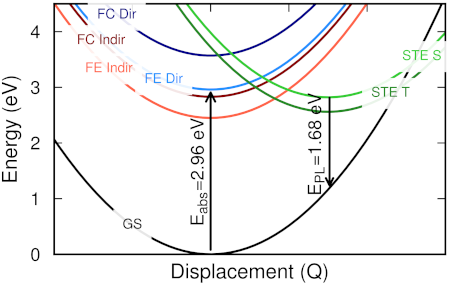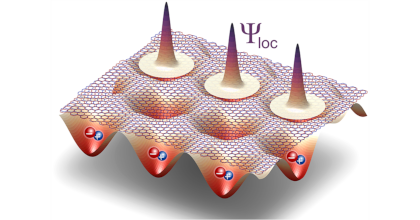Direct, indirect, and self-trapped excitons in Cs2AgBiBr6
M. Baskurt,
P. Erhart,
and
J. Wiktor
The Journal of Physical Chemistry Letters 15, 8549
(2024)
arXiv:2405.20017
doi: 10.1021/acs.jpclett.4c01604
Download PDF

Cs2AgBiBr6 is a representative halide double perovskite which exhibits promising photovoltaic and light-emitting properties, making it a candidate for next-generation solar cells and LED technologies. Here, we study various possible excited states of this material to understand its absorption and emission properties. We use Time-Dependent Density Functional Theory (TD-DFT) coupled with non-empirical hybrid functionals, specifically PBE0(α) and dielectric-dependent hybrids (DDH) to explore direct, indirect, and self-trapped excitons in this material. Based on comparison with experiment, we show that these methods can give excellent prediction of the absorption spectrum and that the fundamental band gap has been underestimated in previous computational studies. We connect the experimental photoluminescence signals at 1.9-2.0 eV to the emission from self-trapped excitons and electron polarons. Finally, we reveal a complex landscape with energetically competing direct, indirect, and self-trapped excitons in the material.


